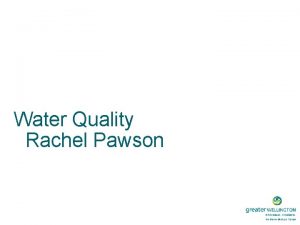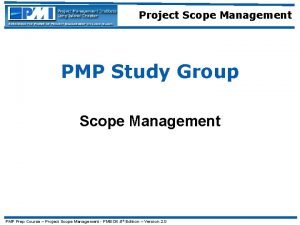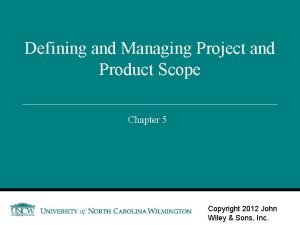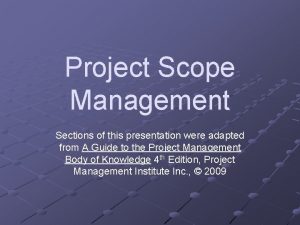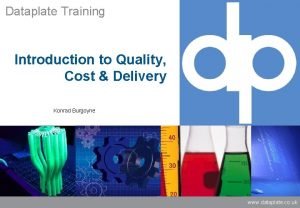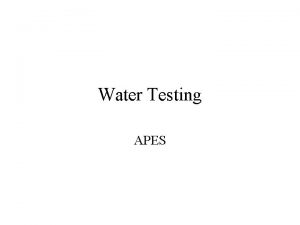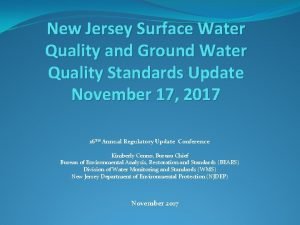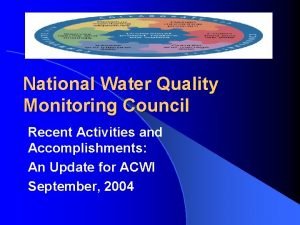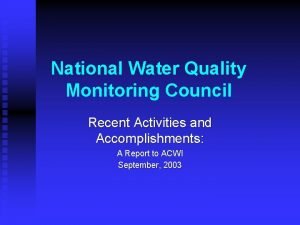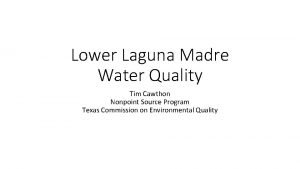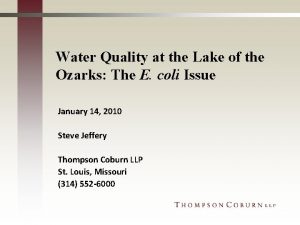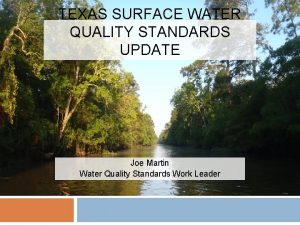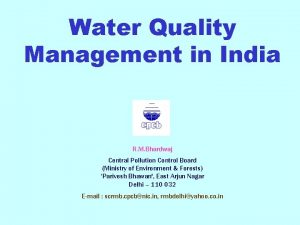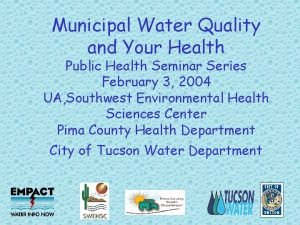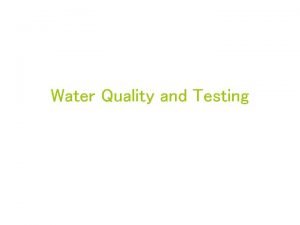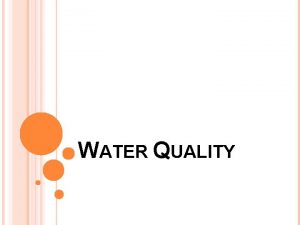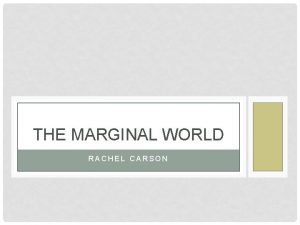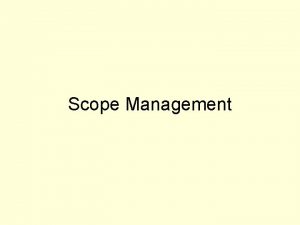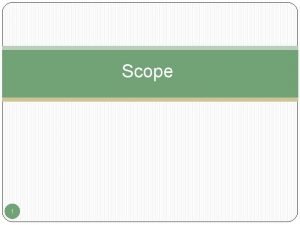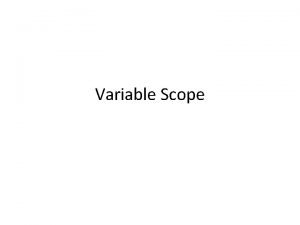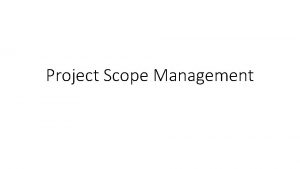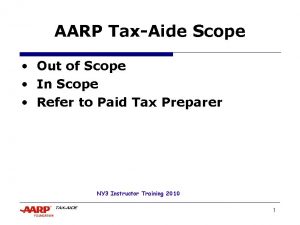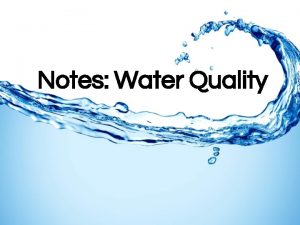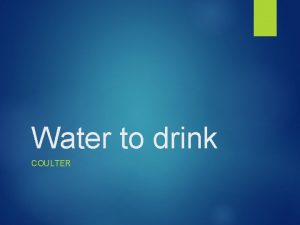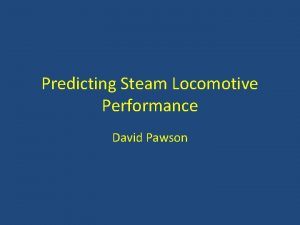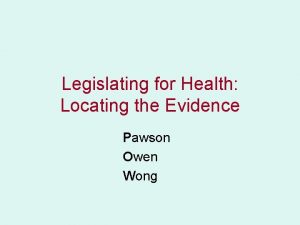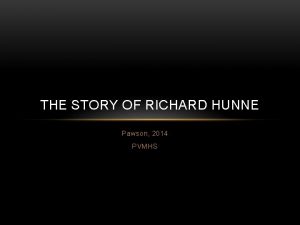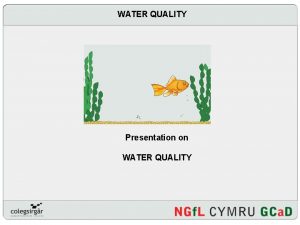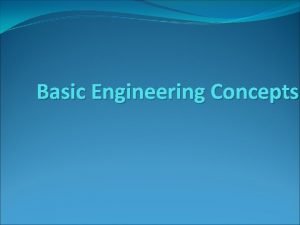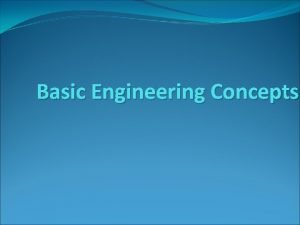Water Quality Rachel Pawson This presentation Scope of




























- Slides: 28

Water Quality Rachel Pawson

This presentation • Scope of presentation • Higher order planning documents • Plan framework • Objectives and policies • Achieving the objectives • Matters of contention

Provisions in my evidence • Objectives O 23, O 24, O 25 and O 26 • Policies P 10, P 62, P 63, P 64, P 65, P 66, P 67 • Methods M 8, M 10, M 11, M 27 and M 28 • Definitions – aquatic ecosystem health and river class

Higher order planning documents • RMA – Part 2 – Section 30 – Section 70 and Section 9 and 15 • NPS-FM • NZCPS • RPS

RMA • RMA Part 2 – Safeguard life-supporting capacity of water and ecosystems – Protect significant indigenous biodiversity – Recognise and provide for the relationship of Māori with the environment – Kaitiakitanga – Maintain and improve the quality of the environment – Protection of the habitat of trout • Section 30

NZCPS • Objective 1 and Policy 21 • Coastal water quality is to be maintained, and enhanced where it has deteriorated from what would otherwise be its natural condition

National Policy Statement for Freshwater Management • Implementation of the NPS-FM: – Progressive implementation programme – Requires regional councils to establish freshwater objectives and set limits

National Policy Statement for Freshwater Management • Policy direction of the NPS-FM: – Objective A 1 - Safeguards life supporting capacity and the health of people – Objective A 2 - Maintain or improve water quality – Policy A 4 included in proposed Plan as Policy P 66 – Appendix 1 - Identifies national compulsory and non-compulsory values – Appendix 2 – includes attribute states for the compulsory values and national bottomlines • 2017 amendments to NPS-FM

Regional Policy Statement for the Wellington Region Most relevant objectives: • Objective 6 – quality of coastal waters. • Objective 12 – quantity and quality of fresh water • Objective 13 – ecosystems • Objective 26 – mauri • Objective 27 – mahinga kai and natural resources used for customary purposes

Regional Policy Statement for the Wellington Region Most relevant policies: • Policy 5 – Maintaining and improving coastal water quality for aquatic ecosystem health • Policy 12 – Management purposes for surface waterbodies • Policy 16 – Promoting discharges to land • Policy 19 – managing amenity, recreational and indigenous biodiversity values of rivers and lakes • Policy 49 – recognising and providing for matters of significance to tangata whenua

Proposed Plan framework for water quality

OBJECTIVES POLICIES RULES Objective 24 Māori relationsh ip policies A range of other objectives relate to the direction set in Objective O 24. Examples include: Objectives O 1 to O 7, O 11, O 14, O 15, O 16 and O 23 Recreation al values and public access policies Example s of other methods M 2, M 10, M 25, M 26 and M 27 Discharg es to water rules Objective O 23 Land water policies Discharg es to land rules A range of other objectives relate to the direction set in Objective O 23. Examples include: Objectives O 1 to O 7, O 24, O 25 and O 44 to O 51 Discharg es to land water policies Land use rules Land use policies Wetlan ds and beds of lakes and river rules Objective O 25 Beds of lakes and rivers and wetlands policies Coastal managem ent rules Example s of other methods M 6, M 8, M 9, M 10, M 13, M 15 and M 27 A range of other objectives relate to the direction set in Objective O 25. Examples include: Objectives O 1 to O 7, O 11, O 14, O 15, O 18, O 23, O 26, O 27 to O 30 and O 33 Māori relationsh ip policies Water allocati on rules Biodiversity, aquatic ecosystem health and mahinga kai policies Example s of other methods M 2, M 8, M 9, M 10, M 25 and M 26

Shared objectives • The values are coupled but they are not the same • Other provisions expression other aspects of the values

Objective O 23 – water quality

Objective O 24 Rivers, lakes, natural wetlands and coastal water are suitable for contact recreation and Māori customary use, including by: a) maintaining water quality, or b) improving water quality in: i. significant contact recreation fresh water bodies to meet, as a minimum, the primary contact recreation objectives in Table 3. 1, and ii. coastal water to meet, as a minimum, the primary contact recreation objectives in Table 3. 3, and iii. all other rivers and lakes and natural wetlands to meet, as a minimum, the secondary contact recreation objectives in Table 3. 2.

Māori customary use component of Objective O 24 • Management of Schedule B and C rivers or lakes that are used for Māori customary use to meet the primary contact recreation objectives • Provide better management within the proposed Plan for Māori customary use values • Additional work required

Contact recreation and Māori customary use policies • Policy P 10 – Contact recreation and Māori customary use • Policy P 63 – Improving water quality for contact recreation and Māori customary use

Objective O 25

Objective O 25 • Evolution of Objective O 25 – Meaningful integrated indicators of aquatic ecosystem health and mahinga kai • Use of narrative objectives • Purpose of Tables 3. 4 to 3. 8

O 25 (officers recommendation)

Objective O 26 The availability of mahinga kai species to support Māori customary harvest is increased, in quantity, quality and diversity.

Policies – land water policies • Policy P 62 – Promotes the discharges to land over direct discharges to water • Policy P 64 – Mixing waters are inappropriate except where there are no adverse effects on mana whenua values • Policy P 65 – Minimises adverse effects of nutrient discharges • Policy P 66 – Inserted as directed by Policy A 4 of the NPS-FM • Policy P 67 – Minimise adverse effects of discharges to land water through a hierarchy of actions • Relationship with Policy P 4 and Policy P 65 and P 67

Other Methods • M 8 – Te Awarua-o-Porirua restoration • M 10 – Water quality investigations and remediation actions • M 11 – Assessment and reporting of the Council in regards to integrated catchment management • M 27 – Improving water quality in priority water bodies • M 28 – development of good management practice guidelines (including definition)

Achieving Objectives O 23, O 24 and O 25 • Wellington region context – Water quality trends – Land use change and intensification • Additional provisions from operative plans – New and amended provisions – Stronger clearer policy direction

Achieving Objectives O 23, O 24 and O 25 • Rural land use activities – Uncollected animal effluent – Policy P 65 and Method M 12, including good management practice • Need for interim limits – The risk of acting vs not acting

Matters of contention • Management of the adverse effects associated with diffuse discharges, including the need to regulate uncollected animal effluent rather than rely on nonregulatory methods that encourage sustainable rural land management. • Inclusion of surface water bodies into Objective O 23 • The coupling of aquatic ecosystem health and mahinga kai and contact recreation and Māori customary use in shared objectives

Matters of contention • The primary contact recreation water quality objective in Table 3. 1; where to what rivers and lakes they should apply • The suitability of narrative objectives and the need for more numeric objectives in Tables 3. 1 to 3. 8 of Objectives O 24 and O 25 • The inclusion of additional attributes in Tables 3. 1, 3. 4 and 3. 5 of Objectives O 24 and O 25

Matters of contention • Table 3. 3 of Objective O 24 in relation to the Commercial Port Area and the appropriateness of shellfish gathering adjacent to stormwater outfalls • The need to provide an exemption for water supply network operations in Policy P 64 • Inclusion of qualifiers that reflect the limited practicalities of land disposal in Policy P 62 • The policy direction set by Policy P 67.
 Rachel pawson
Rachel pawson Water and water and water water
Water and water and water water Process scope definition
Process scope definition Product scope vs project scope
Product scope vs project scope Project scope presentation
Project scope presentation Project scope presentation
Project scope presentation Perform quality assurance
Perform quality assurance Pmp quality management
Pmp quality management What are quality standards in project management
What are quality standards in project management Process of nursing audit
Process of nursing audit Compliance vs quality
Compliance vs quality Concept of quality assurance
Concept of quality assurance Quality management gurus
Quality management gurus Quality is free: the art of making quality certain
Quality is free: the art of making quality certain What is tqm
What is tqm Quality cost delivery presentation
Quality cost delivery presentation Total quality management presentation
Total quality management presentation Diameters of fetal head
Diameters of fetal head 4 maneuvers of leopold
4 maneuvers of leopold Bod apes
Bod apes Kathryn timmerman
Kathryn timmerman Njdep surface water quality standards
Njdep surface water quality standards National water quality monitoring council
National water quality monitoring council National water quality monitoring council
National water quality monitoring council Tceq
Tceq Lake of the ozarks water quality
Lake of the ozarks water quality Texas surface water quality standards
Texas surface water quality standards Water quality management in india
Water quality management in india Tucson water quality
Tucson water quality
